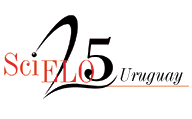The formation of the Argentine clergy in the Pio Latin American College. The students of the diocese of Córdoba (Argentina) and the consolidation of a Roman ecclesial model (1877-1927)
DOI:
https://doi.org/10.25185/12.4Keywords:
Pio Latin American College, Secular clergy, Formation, Diocese of Cordoba, 19th and 20th centuriesAbstract
The Colegio Pio Latino Americano, founded in Rome in 1858, was a milestone in the Romanization process of the Argentine clergy. The paper seeks to analyze the impact of this "Roman group" in the construction of a clergy formation matrix, given that a significant number of former students held teaching positions in the local seminary. To do this, we identify the students sent to Rome by the diocese of Córdoba between 1877 and 1927, we analyze the composition of the group, the training they received in their years of instruction and we reconstruct the personal trajectories upon their return. The hypothesis that we propose is that the formation of the clergy in the Colegio Pio Latino was not promoted, in the Cordovan case, by the diocesan bishops. Sending students was, fundamentally, an interest of the wealthy families of Córdoba, who sent their children to study in Rome and supported them financially. Upon their return, they held positions of government and ecclesiastical administration. The promotion and diffusion of the college in the diocese responded, almost exclusively, to the initiative of the former students, at least until 1927, when Monsignor Emilio Laffite, a former student of the Pio Latino, was appointed diocesan bishop. Of the analyzed group, five reached the episcopal miter and were assigned to other Argentine dioceses and three of them were archbishops. Is it possible to propose the construction of a Roman matrix for the government of particular dioceses or Churches? This, without a doubt, is the subject of another work.
Downloads
References
Archivos
Archivo Arzobispal de Córdoba (Córdoba, Argentina).
Archivo del Colegio Pío Latino Americano (Roma).
Archivum Romanum Societatis Iesu (Roma).
Fuentes periódicas
Boletín de los Alumnos del Pontificio Colegio Pio Latino Americano (Roma).
Boletín Eclesiástico de la Diócesis de Córdoba (Córdoba, Argentina).
Revista Eclesiástica del Obispado de Buenos Aires (Buenos Aires).
Referencias bibliográficas
Airiau, Paul. “Les séminaires diocésans français, 1880-1914”. Revue de l'Histoire de l'Église de France, no 226 (2005): 71-89.
Altamira, Luis Roberto. El Seminario Conciliar de Nuestra Señora de Loreto. Colegio Mayor de la Universidad de Córdoba. Córdoba: Imprenta de la Universidad, 1943.
Arancibia, José María y Nelson Dellaferrera. “Un Sínodo diocesano en el siglo XIX. Córdoba”. Teología, nº 41 (1983): 5-48.
Bautista García, Cecilia. “Hacia la romanización de la Iglesia mexicana a fines del siglo XIX”. Historia Mexicana, vol. LV (2005): 99-141.
Bautista García, Cecilia. Clérigos virtuoso e instruidos. Un proyecto de romanización clerical en el arzobispado de México. Michoacán 1867-1887. Michoacán: Universidad Michoacana de San Nicolás de Hidalgo, 2017.
Boutry, Philippe. “«Vertus d'état» et clergé intellectuel; la crise du modèle ‘sulpicien’ dans la formation des prêtres français au XIXe siècle”. Problèmes d'histoire de l'éducation. Actes des séminaires organisés par l'École Française de Rome et l'Università di Roma, 207-228, Roma: École Française de Rome, 1985.
Di Stefano, Roberto y Loris Zanata. Historia de la Iglesia Argentina. Desde la Conquista a finales del siglo XX. Buenos Aires: Grijalbo Mondadori, 2000.
Gonzáles, Mamerto. Fray Mamerto Esquiú y Medina. Su vida Privada, t. 1. Córdoba: La Moderna, 1909.
Khöler, Oskar. “El plan mundial de León XIII. Objetivos y métodos”. En Manual de Historia de la Iglesia, t. VIII, editado por Hubert Jedin, 35-70. Barcelona: Herder, 1978.
Luque Alcaide, Elisa. “La restauración de la vida católica en América Latina en la segunda mitad del siglo XIX”. Anuario de Historia de la Iglesia, nº 12 (2003): 71-89.
Luque Alcaide, Elisa. Iglesia en América Latina ( siglo XIX), Renovación y continuidad en tiempos de cambio. Pamplona: EUNSA, 2012.
Martínez, Ignacio. “Historia de la Iglesia argentina: síntesis y punto de partida”. Debates de Redhisel, Año 4, nº 3 (2021): 217-232. https://www.teseopress.com/debatesredhisel3/chapter/ignacio-martinez/
Medina Ascencio, Luis S. J. La Historia del Colegio Pio Latino americano. Roma 1858-1878. México: Editorial JUS, S.A., 1979.
Meyer, Jean. Historia de los cristianos en América Latina, siglos XIX y XX. México: Editorial Vuelta, 1991.
Langlois, Claude. “Le temps des séminaires. La formation cléricale en France aux XIXe et XXe siècles”. Problèmes d'histoire de l'éducation. Actes des séminaires organisés par l'École Française de Rome et l'Università di Roma, 229-255. Roma: École Française de Rome, 1985.
Ramón Solans, Francisco Javier. “Pensar la globalidad de la Iglesia católica. La formación de sacerdotes latinoamericanos en Roma en la segunda mitad del siglo XIX”. Debates de Redhisel, Año 4, n° 3, apéndice (2021): 41-58. https://www.teseopress.com/apendicededebatesderedhisel3/chapter/sin_titulo-2/
Roselli, Silvina Daniela. “Catolicismo social en el obispado de Pablo Padilla y Bárcena. Tucumán (1897-1921)”. Segundas Jornadas Nacionales de Historia Social, 13, 14 y 15 de mayo de 2009, La Falda, Córdoba – Argentina. http://sedici.unlp.edu.ar/handle/10915/113711).
Sínodo Diocesano celebrado en Córdoba, por el Ilmo. y Rmo. Señor Obispo Don Fray Bustos y Ferreira, en el año del Señor MCMVI. Resoluciones y Apéndices. Apéndice “El Sínodo Diocesano de 1877”. Córdoba: La Industrial, 1907.
Soler, Mariano. Memorial sobre el gran Instituto Eclesiástico de la América Latina: Dedicado al venerable clero de la Iglesia Latino-Americana. Montevideo: Tipografía Uruguaya, Montevideo, 1887.
Soneira Abelardo. Las estrategias Institucionales de la Iglesia católica, Biblioteca Política Argentina nº 269. Buenos Aires: CEAL, 1978.
Published
How to Cite
Issue
Section
License
Copyright (c) 2022 Milagros Gallardo

This work is licensed under a Creative Commons Attribution 4.0 International License.



























 This work is under a
This work is under a 